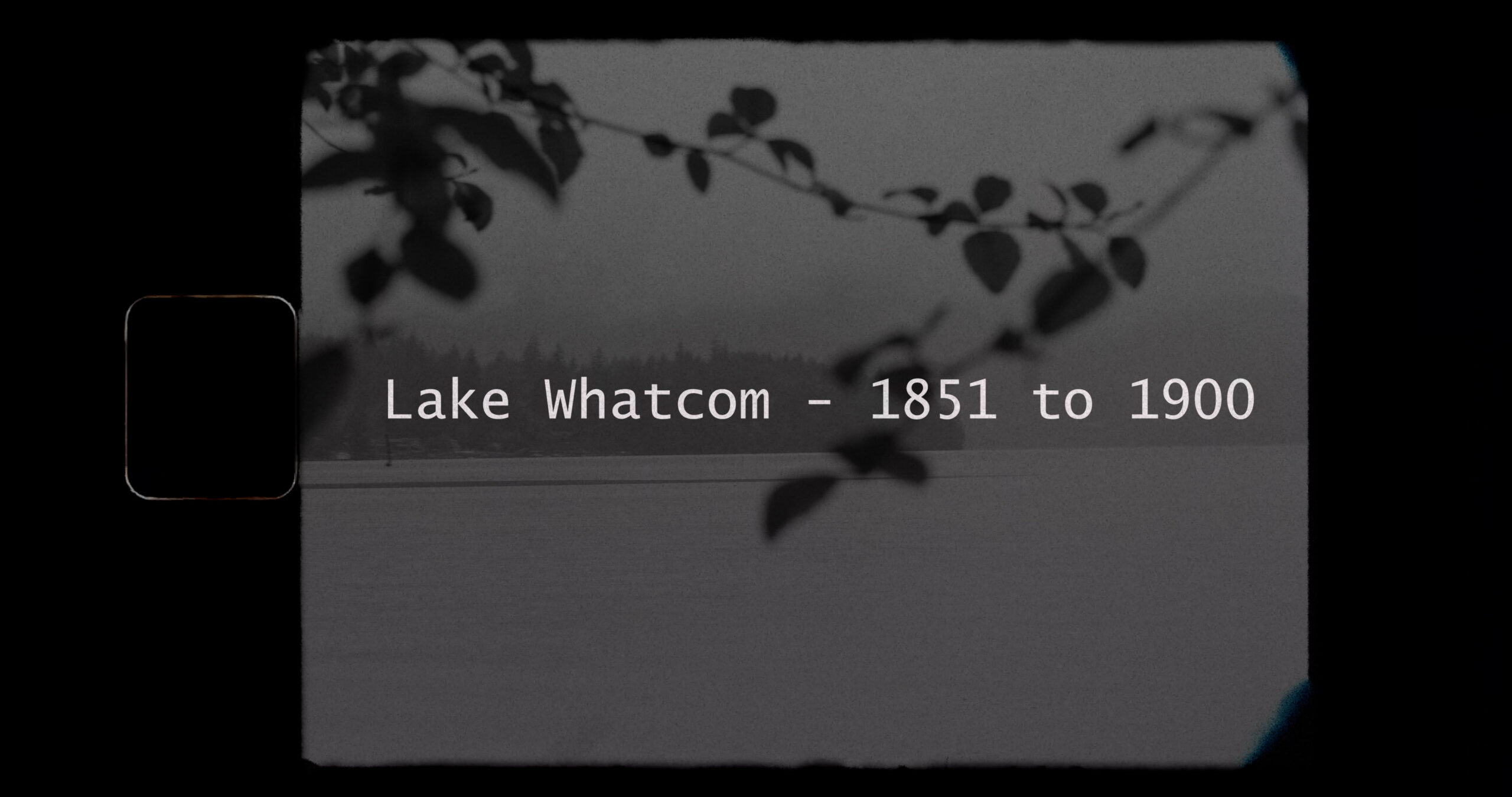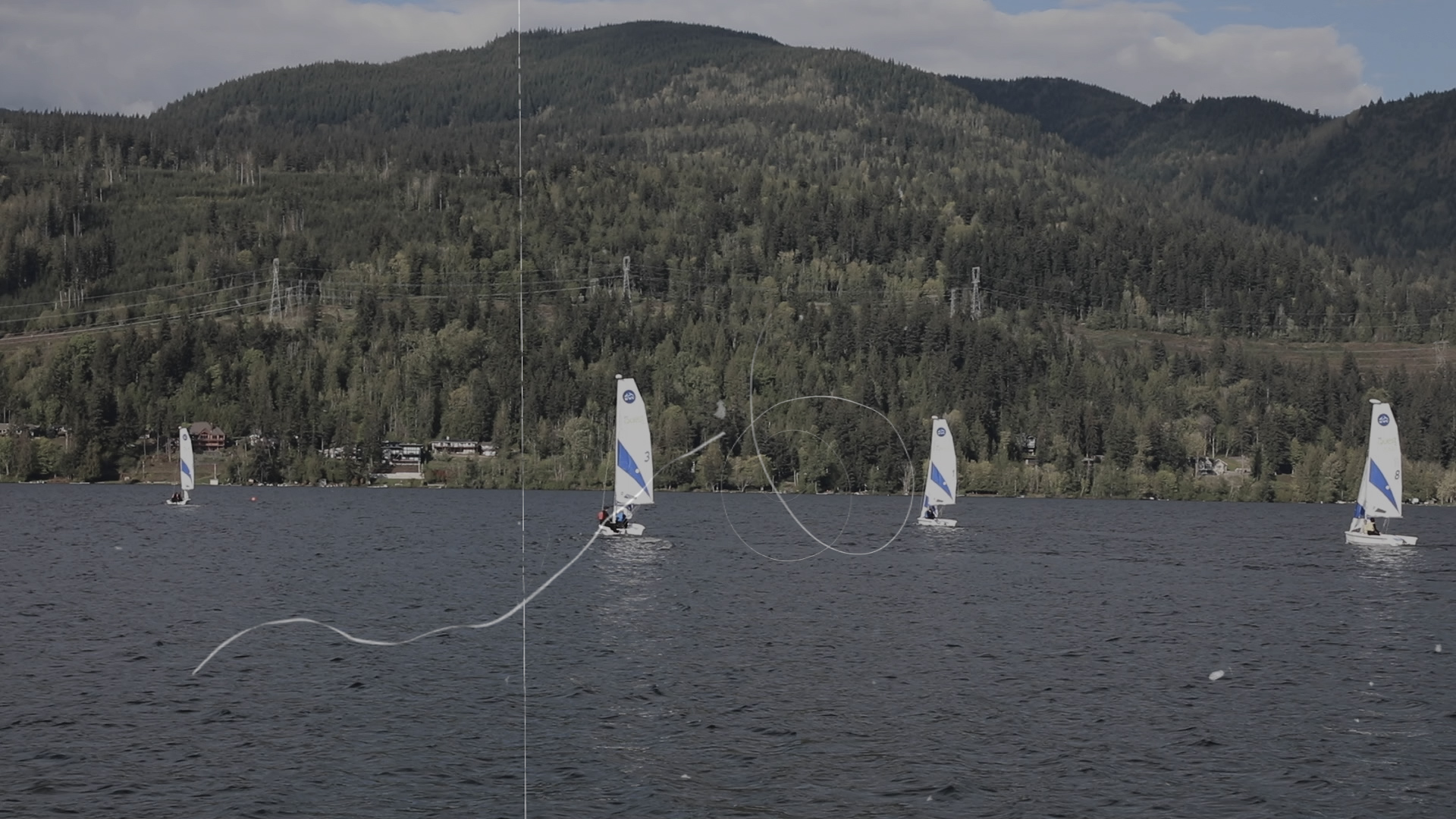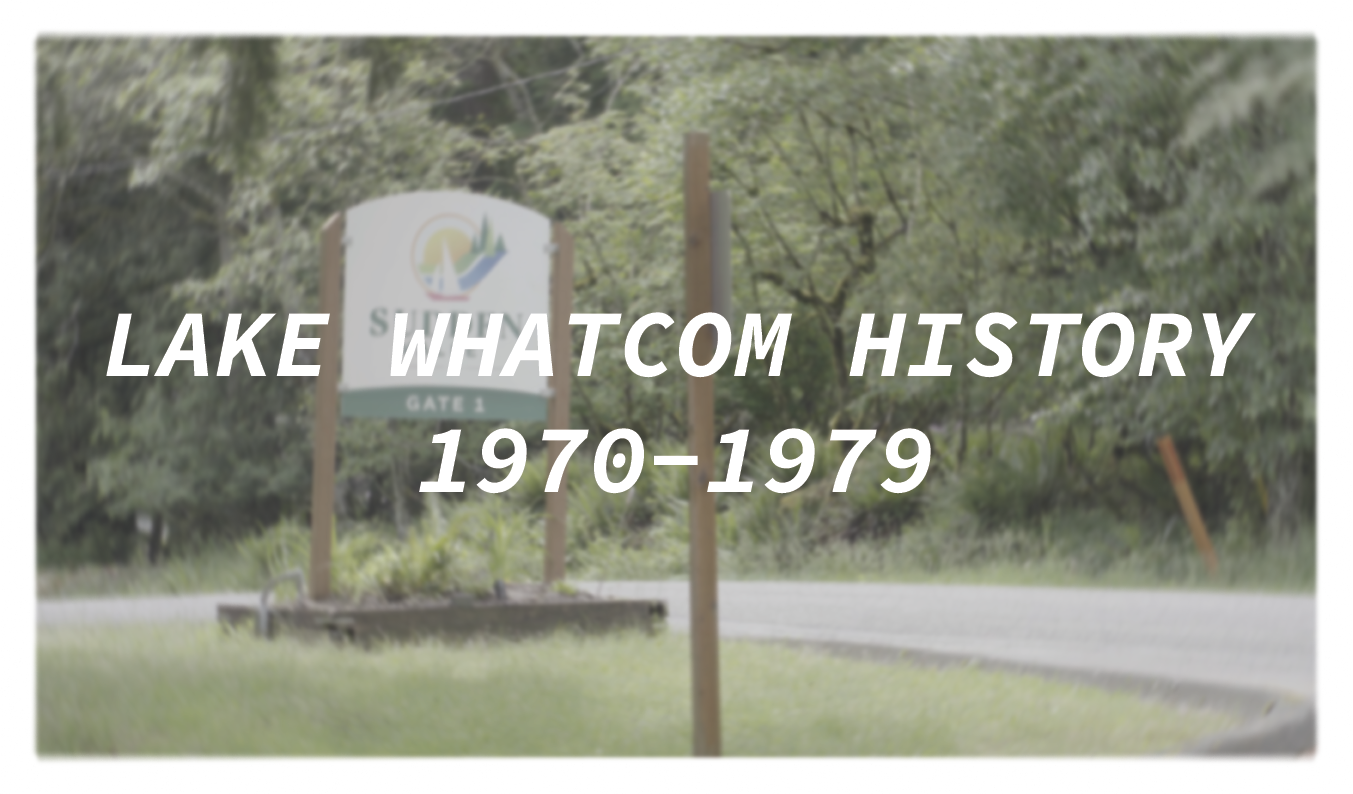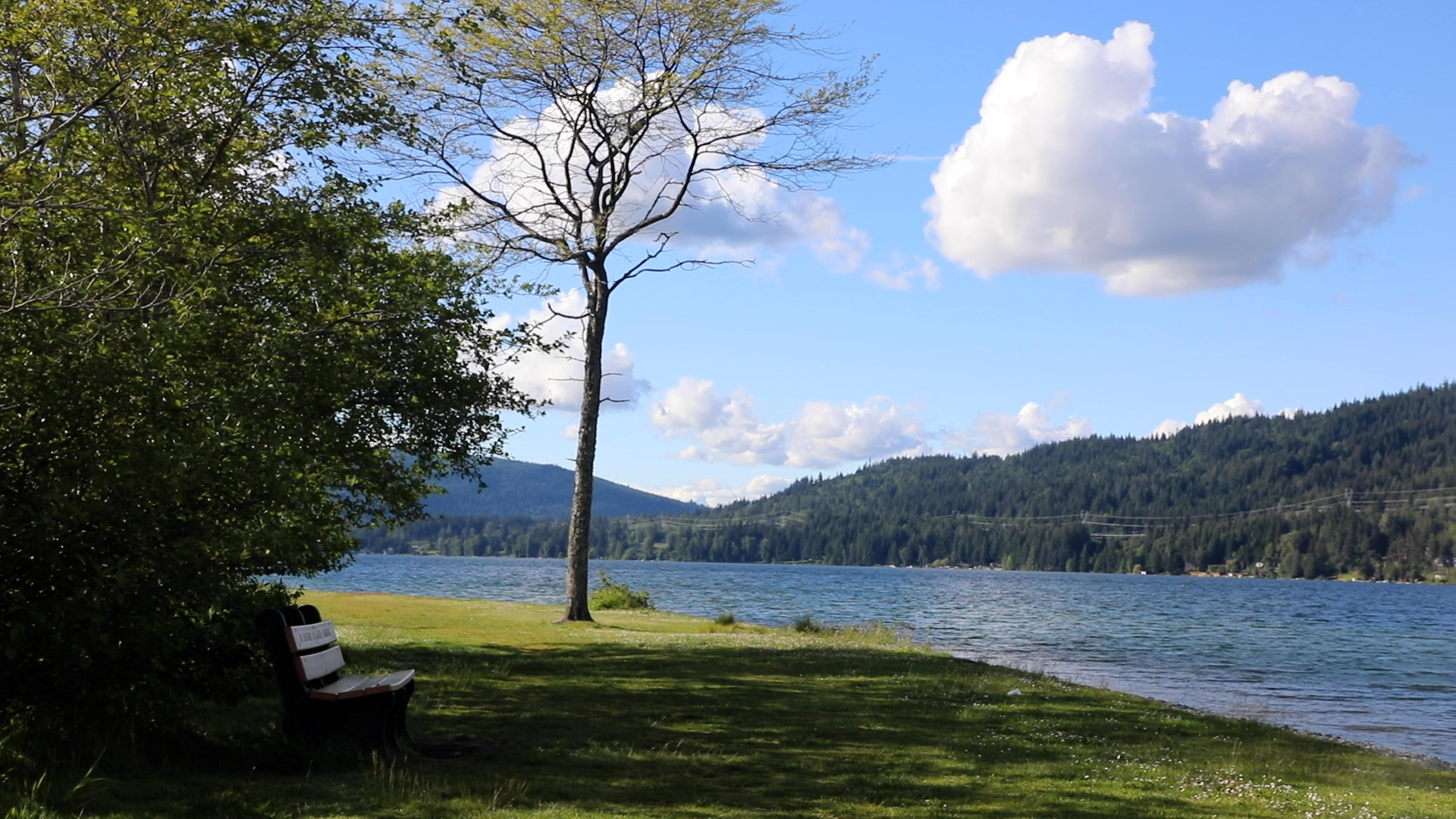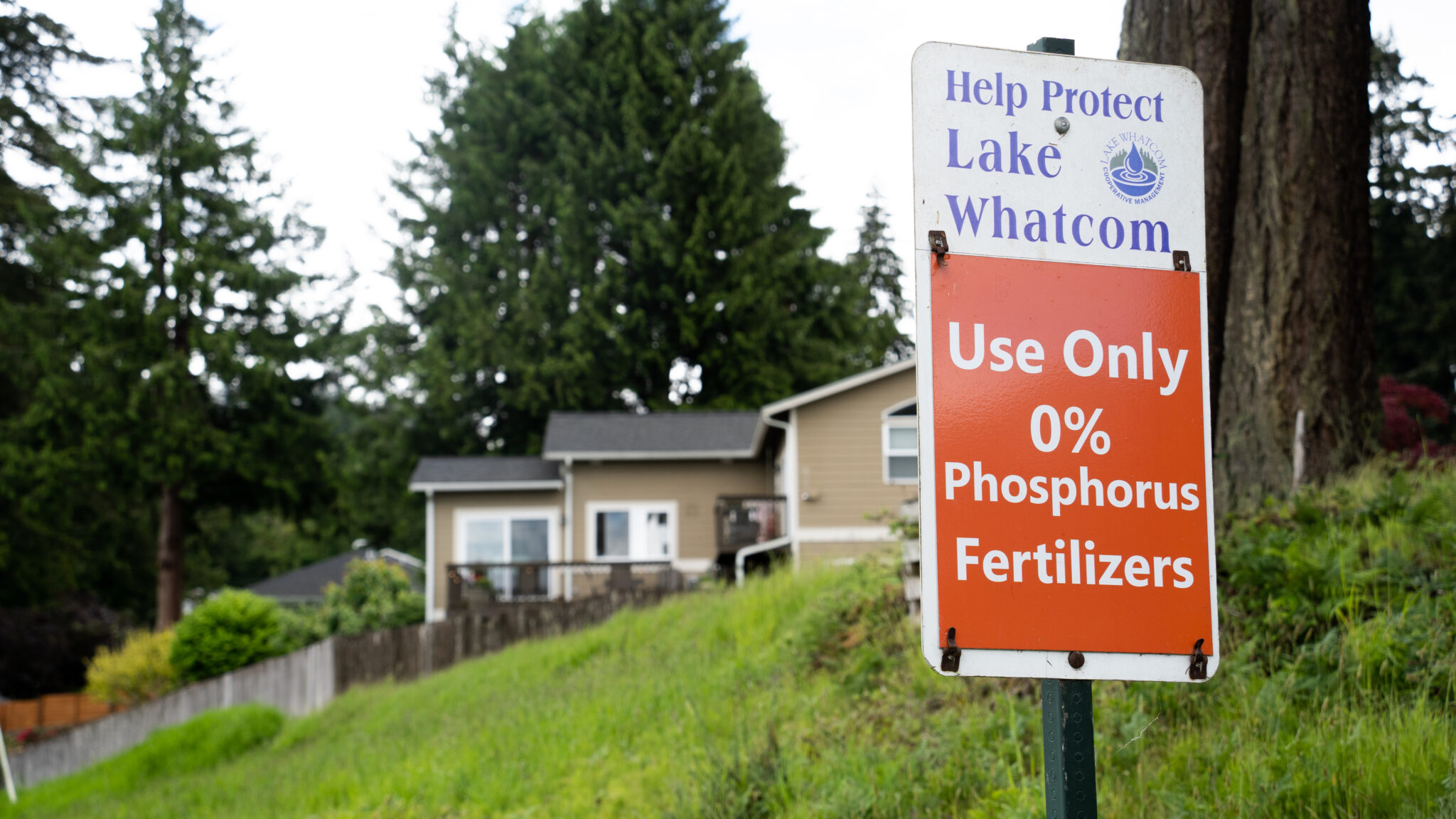DIVING DEEPER
A TIMELINE HISTORY OF LAKE WHATCOM
Since ages past, the Lake Whatcom watershed has been home to a vibrant history of different peoples and events. Beginning with the Coast Salish people inhabiting the land, the 10-mile-long body of water now acts as a drinking source for over 100,000 in Whatcom County.
We acknowledge we are working within the ancestral homeland of the Lummi, Nooksack and other Coast Salish peoples. They have inhabited it since time immemorial, respecting the lake, land, river and ocean with the understanding that everything is connected, related and alive. We acknowledge the elders and their collective and individual plights and achievements.
Project by Will Story, Spencer Arps and Lauren Eydt
Special thanks to Jeff Jewell, Whatcom Museum Researcher/Historian
Pre – 1850

Nestled in the heart of the Pacific Northwest, Lake Whatcom is a jewel of natural beauty. But beyond its gorgeous surface lies a rich tapestry of history woven over centuries.
The first known settlers of Lake Whatcom were the Northwest Coast Salish Tribe occupying the south end of the lake. This area was more than just a place to live, it was a hub for fishing, camping, and trade. Known by the Coast Salish map as the Hahch-wah-AHM-eck tribe, this village was the starting point of a trail leading to the upper South Fork valley.
Historical sources vary on the identity of the tribe that occupied this area. One source refers to them as the Kaw-tcha-ha-muk tribe and the other as the Saquantch tribe. It is unsure if they are the same tribe or not, however, it is certain that their occupation of the area came to an end with their defeat by the Lummi Tribe.
1851 – 1900
Emerging communities and industry
Discover the history of Lake Whatcom’s colonial settlements from 1851 to 1900. We explore Silver Beach’s hotel and amusement park, Geneva’s lumber mills, and the Blue Canyon Coal Mine community. Learn more about the early trails, steamboats, and the electric railway that connected the area to Bellingham.
Video by Will Story
Photos courtesy of the Whatcom Museum Photo Archive
1901 – 1929
A township, a railroad and a lumbermill
This video details the events relating to the history of Lake Whatcom from the years 1901 to 1929. The video covers information regarding the town of Park and Blue Canyon, Washington, as well as the Larson Lumber Mill.
Video by Spencer Arps
Historic Photos courtesy of the Whatcom Museum Photo Archive
1930 – 1949
From Industry to Enjoyment
Join us as we explore the changes that occurred around Lake Whatcom in the 1930s and 1940s. This transitional period saw a major shift from industrial use to a wide array of land and water activities.
Video by Lauren Eydt
Photos courtesy Whatcom Museum Photo Archive.
1950 – 1969
Developing, damming and regulating along the water
Explore the history of Lake Whatcom from 1950 to 1969 in this video. From the Corning Ranch acquisition to the Middle Fork Diversion Dam, and the creation of the Institute for Watershed Studies, learn about this chapter in the lake’s history. Join us on a journey through time during this era of Lake Whatcom’s history.
Video by Will Story
Photos courtesy of the Whatcom Museum Photo Archive
1970 – 1979
Expansion of Sudden Valley
This video provides an overview of the Sudden Valley development along the shores of Lake Whatcom, including changes of ownership during the 1970s and the current amenities the community offers.
Video by Spencer Arps
1980 – 1989
Managing increased traffic, water and land usage
This video details the expansion of the Sudden Valley development located outside of Bellingham WA city limits. The video explains the changes of ownership during the 1970’s and the current amenities the community offers.
Video by Lauren Eydt
1990 – 1999
Growing Pains
This video explores the Whatcom watershed’s rapid urbanization in the 1990s, its traffic congestion, and infrastructure struggles. Learn about the legal battles that shaped the region’s water services, the land exchange to preserve forested areas, and the environmental studies that highlighted water quality issues
Video by Will Story
2000 – 2007
Phosphorus and the Lake Whatcom Watershed

In 2005, both Whatcom County and the City of Bellingham approved ordinances banning the use of phosphorus fertilizers in the Lake Whatcom Watershed.
Phosphorus can enter the watershed through lawn fertilizers, exposed soil from construction and landscaping, pet and wildlife droppings, failing septic systems and a slew of other sources. Natural phosphorus levels can be beneficial for plant growth and is often a main ingredient in soil fertilizer. However too much phosphorus can negatively impact an aquatic environment, as it can promote rapid algae growth.
The term “eutrophication” refers to the action of algae essentially blocking out sunlight from reaching the bottom/deeper levels of a marine environment. This causes plants growing on the bottom of the lake to be choked out and eventually die. Additionally, when algae die, and sinks to the bottom of the lake, it is consumed by bacteria that takes oxygen out of the ecosystem. Too much bacteria creates an imbalance in oxygen levels, which has many effects on the ecosystem.
In 2001 Washington State University developed a blend of fertilizer that was phosphorus-free and manufactured by Whatcom Farmers Co-op, which created a safer alternative for both the marine and urban ecosystems of the Lake Whatcom Watershed.
By Spencer Arps
Source: Information and graphic from COB
Learn more about what our local government is doing to improve Lake Whatcom’s water quality.

